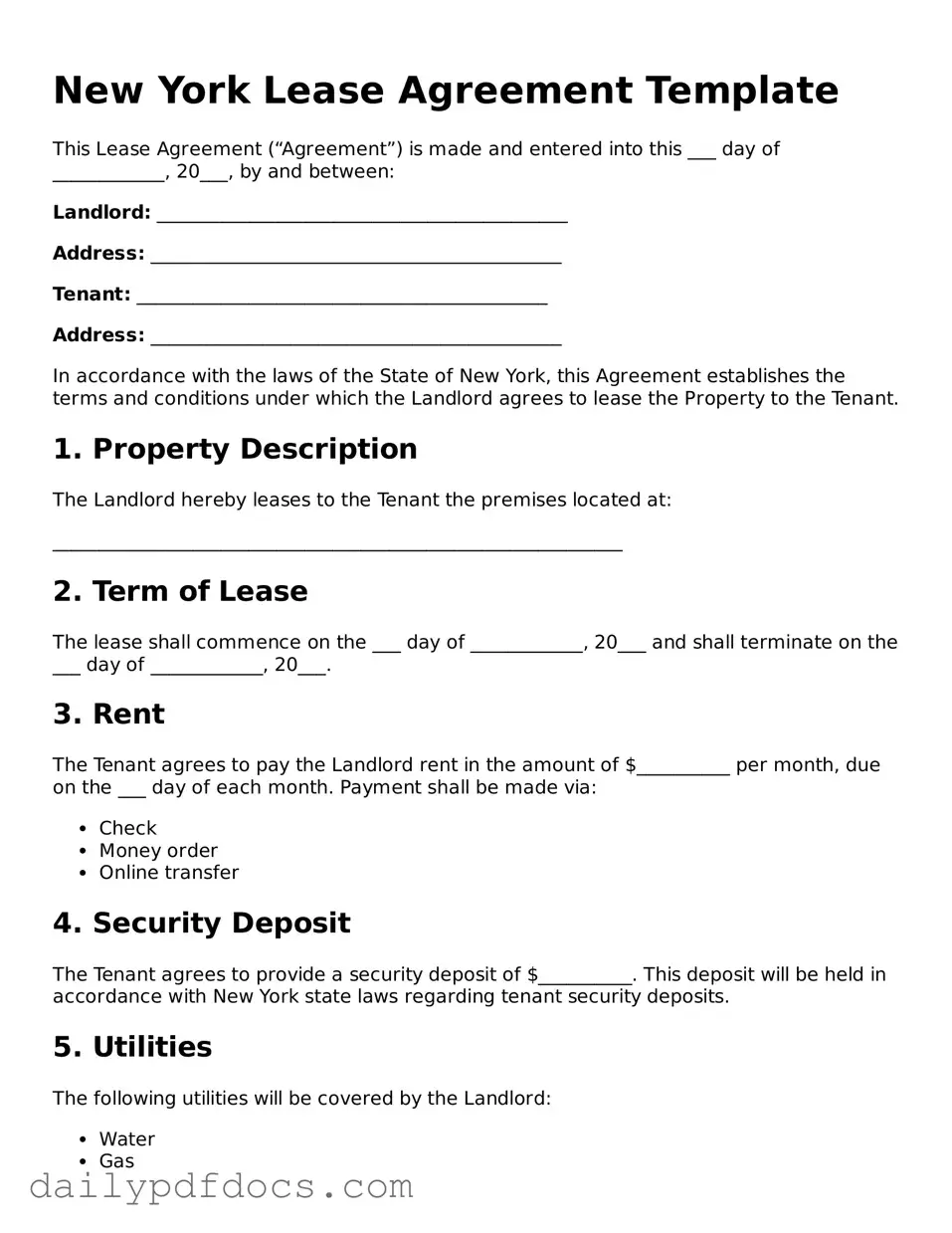New York Lease Agreement Template
This Lease Agreement (“Agreement”) is made and entered into this ___ day of ____________, 20___, by and between:
Landlord: ____________________________________________
Address: ____________________________________________
Tenant: ____________________________________________
Address: ____________________________________________
In accordance with the laws of the State of New York, this Agreement establishes the terms and conditions under which the Landlord agrees to lease the Property to the Tenant.
1. Property Description
The Landlord hereby leases to the Tenant the premises located at:
_____________________________________________________________
2. Term of Lease
The lease shall commence on the ___ day of ____________, 20___ and shall terminate on the ___ day of ____________, 20___.
3. Rent
The Tenant agrees to pay the Landlord rent in the amount of $__________ per month, due on the ___ day of each month. Payment shall be made via:
- Check
- Money order
- Online transfer
4. Security Deposit
The Tenant agrees to provide a security deposit of $__________. This deposit will be held in accordance with New York state laws regarding tenant security deposits.
5. Utilities
The following utilities will be covered by the Landlord:
The Tenant is responsible for the payment of:
6. Use of Property
The Property will be used for residential purposes only. Any other use requires the Landlord’s written consent.
7. Maintenance and Repairs
The Tenant is responsible for keeping the Property in good condition. The Landlord will address necessary repairs, unless the damage is a result of the Tenant’s actions.
8. Pets
Pets are not allowed without prior written consent from the Landlord.
9. Governing Law
This Agreement shall be governed by the laws of the State of New York.
10. Additional Terms
_____________________________________________________________
_____________________________________________________________
Signatures
Landlord Signature: ___________________________________ Date: ____________
Tenant Signature: ____________________________________ Date: ____________
